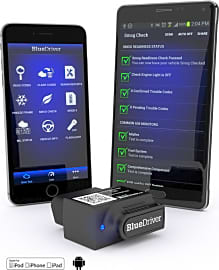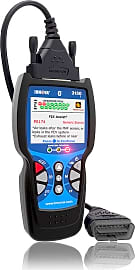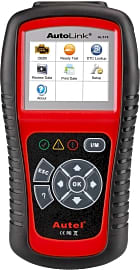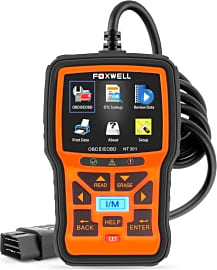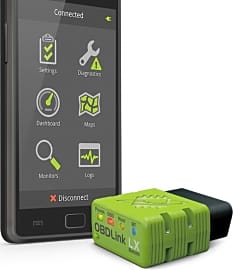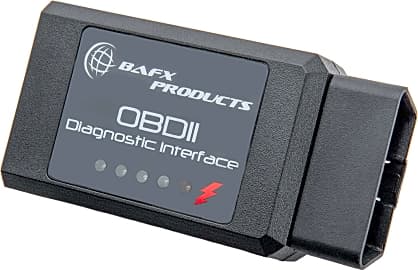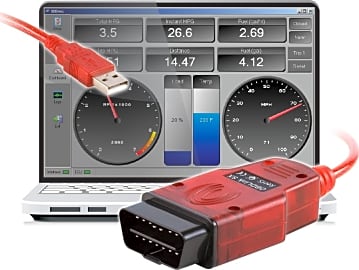The 10 Best OBD2 Scanners

This wiki has been updated 46 times since it was first published in May of 2015. Back in the day, a good mechanic could tell you what was wrong with your car by simply driving your car or listening to the engine. Not any more. Today's vehicles are equipped with sophisticated electronics that require onboard diagnostics tools to figure out what is happening. With one of these OBD2 scanners, mechanics and home DIYers can quickly determine the source of most problems. When users buy our independently chosen editorial choices, we may earn commissions to help fund the Wiki.
Editor's Notes
October 21, 2020:
OBD2 scanners might just be one of the most helpful tools for diagnosing issues in modern vehicles. In addition to providing you with the exact cause of a problem, they can also be used to reset codes, so you don't have to keep staring at a check engine light after the repair has been completed.
The most full-featured, self-contained model on our list is the Autel MaxiCom MK808TS, which has a large, tablet-like screen where it displays all of its data. In addition to the traditional systems you expect from all OBD2 scanners, it also checks the brakes, safety, and tire pressure systems, as well as others. Plus, it works with 57 car models, can display results in 13 languages, and offers wireless convenience.
Other models on our list that offer wireless convenience are the BlueDriver LSB2, ScanTool 427201, and BAFX Products 3127. While these can be very convenient for DIYers who work on their own vehicles, they may not make sense for mechanics since they rely on a phone or tablet to display their results, and most people would prefer not to have to constantly pull out these expensive devices in situations that are prone to putting them at risk of getting damaged, such as in a busy shop.
While options like the Innova 3150f, Ancel AD310 Classic, Launch CRP123, Autel AL519, and Foxwell NT301 are going to keep you tethered to the vehicle the entire time you want to view live data, they are all built tough enough to stand up to the inevitable rough handling they will be subjected to in a mechanic's shop. Of these, the Innova 3150f, Launch CRP123, and Autel AL519 offer the most functionality and compatibility with the widest range of vehicles.
April 08, 2019:
OBD2 scanners take all the guesswork out of diagnosing most vehicle problems. If you ever had a check engine light turn or, or almost any other dashboard light for that matter, you can use on these tools to determine what you need to fix, and then reset the fault light afterwards. If you are a professional mechanic, you will most likely be best served with one of the feature-packed models, so you never run across an error code you can't fix. Your best options will be the Autel MaxiCom MK808TS, Innova 3150f, Launch CRP123, and Foxwell NT301. Home DIYers who want to be able to diagnosis and fix their own vehicles may not need a model that works with every car make. They also may not want to pay extra money for something that can take snapshot of the information for later recall. The Ancel AD310 Classic, Autel AL519, and ScanTool 425801 are more budget-friendly models that will be capable enough for most users. The Lemur Vehicle Monitors BlueDriver, BAFX Products 3127, and ScanTool 427201 are also ideal for the average car owner, since you can leave them plugged into your vehicle at all times and can check sensor status on your phone whenever you need to.
Special Honors
Autel MaxiCom MK908P The Autel MaxiCom MK908P is extremely expensive and overkill for anyone except professional mechanics that work on a wide range of vehicles and want the ability to view an extremely large amount of data in various forms. It comes with adapters for nearly every type of automobile, is compatible with essentially all OBD protocols, and can display the information in text, graph, analog or digital gauge formats. auteltech.com
A Brief History Of OBD
Nowadays, OBD systems can tell you about everything from crankshaft and camshaft position to manifold pressure to ignition misfires.
On-board diagnostics (OBD) is a system that relies on sensors and computers in your car to display vital information about how your car is operating. In its earliest days, OBD took the form of cooling system gauges, tachometers, oil pressure gauges, and fuel level indicators to give us basic information about a car's condition. Nowadays, OBD systems can tell you about everything from crankshaft and camshaft position to manifold pressure to ignition misfires.
Computerized OBD systems started coming online with Volkswagen's fuel injected models as early as 1969. These early versions were very basic and would illuminate a malfunction indicator if there was a problem, but they didn't provide any useful diagnostic information about the actual nature of the problem. Later on in the early 1980s, General Motors began to implement a computerized assembly line diagnostic link (ALDL), which was actually capable of reading out error codes. New OBD2 systems and scanners use a digital communication port that relies a series diagnostic trouble codes, which identify the problem so it can be found and fixed quickly.
In 1991, the California Air Resources Board (CARB) instituted new regulations that required every new automobile to have an OBD1 system. These initial systems weren't standardized and each car manufacturer used its own connectors and data link protocol. In 1994, the Society of Automotive Engineers (SAE) recommended a standardized connector and data link protocol for all OBD systems and this became what is now known as OBD2. At the same time, CARB required that any car manufactured from 1996 and onward have the standardized OBD2 system installed and the U.S. government followed suit with nationwide regulations. The European Union instituted OBD2 regulations in October of 1998.
How To Use An OBD2 Scanner
Using an OBD2 scanner is actually quite simple and it doesn't require any mechanical knowledge. That's because OBD2 scanners don't fix problems, they identify them so that you, or a mechanic, can fix them without having to waste time trying to figure out what is wrong. OBD2 scanners are simply a diagnostic tool. Think of it like a doctor's visit for your car.
If you are, select the system you want to check and then you will be presented with a code.
The first step in using an OBD2 scanner is to find your vehicle's diagnostic or data link connector (DLC). It is a somewhat triangular 16-pin connector that looks similar to old computer monitor and printer ports. It is most often located underneath the left hand side of the dashboard near the steering column. Once found, you insert the OBD2 scanner connector, this can either be a cable attached to the scanner or a separate device that wirelessly sends the information, so it can initiate communications with your on-board computers. You will then see some kind of message like "establishing data link" or "searching for protocol." If your screen does not light up with some kind of message, you device has not made a connection and you should try jiggling the connector or unplugging it and plugging it back in.
Next, you will have to enter your vehicle's information, which may include the make and model, VIN number, and engine type. Each scanner will require different information depending on the device model and manufacturer. After you scanner has made a connection, you've entered your vehicle information, and it has booted up, you can then start searching for trouble codes. Browse through the scanner's menu until you see something that says "trouble codes", or just "codes". You may or my not be presented with an option to choose from specific systems like the transmission, brakes, powertrain, etc. If you are, select the system you want to check and then you will be presented with a code. If you aren't presented with an option of systems to check, your scanner will just immediately present you with the trouble code.
Understanding OBD2 Codes
Using the OBD2 scanner is just the first step. Next, you need to learn how to read the code you are presented with. You will be shown either an active code or a pending code. An active code alerts you to a malfunction that is keeping your check engine light illuminated. A pending code means that the OBD2 scan has failed an emission control system operation once, and if it fails again, your check engine light will be illuminated. At this point the malfunction will become an active code.
The rest of the digits will identify the exact problem you car is experiencing.
All of the trouble codes displayed will start with one of four letters. "P" is for powertrain codes and covers the emissions system, ignition system, fuel system, transmission, and engine. "B" is for body and covers power seating, seat belts, airbags, and more. "C" is chassis related and will cover your axles, brakes, wheel pressure, suspension, etc. "U" is for network and other communication related issues.
The second digit lets you know if it is a OBD2 standardized generic code or if it is manufacturer specific. 0 means it is generic, and 1 means it is manufacturer specific. The rest of the digits will identify the exact problem you car is experiencing. Since there are literally thousands of fault codes, nobody will have them all memorized and your next step will be to consult a list of OBD2 codes to find out what is wrong with your car.



